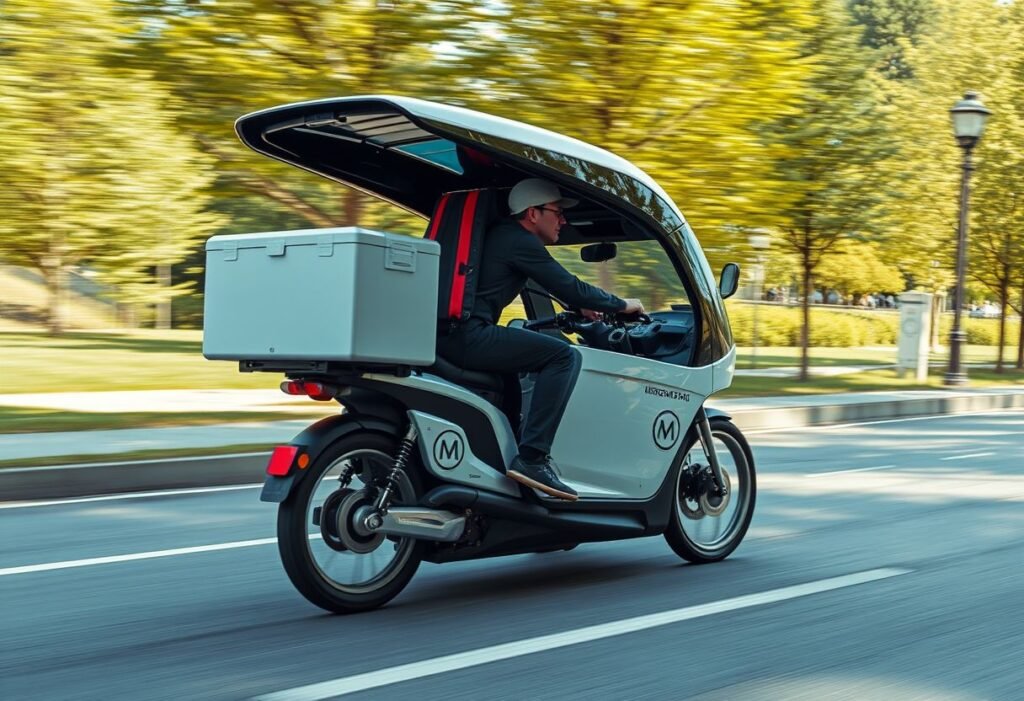As the technology behind autonomous delivery vehicles evolves, understanding the future of this innovation becomes critical. These vehicles have the potential to redefine logistics and change how we think about delivery services.
The Rise of Autonomous Delivery Vehicles
The emergence of autonomous delivery vehicles represents a significant leap in logistics innovation. With advancements in machine learning and artificial intelligence, these vehicles are designed to travel without human intervention, optimizing operations and reducing costs. The COVID-19 pandemic accelerated the adoption of contactless services, leading many businesses to explore autonomous options. Companies like Amazon and Google are at the forefront, investing heavily in robotics that can navigate urban environments effectively. As consumer expectations evolve, businesses that leverage this technology stand to gain a competitive edge.
Technology Driving Autonomous Vehicles
The technology powering autonomous delivery vehicles is grounded in sophisticated systems. Various sensors, including LiDAR, cameras, and GPS, allow these vehicles to analyze their surroundings in real-time. This complex integration ensures safety and operational efficiency. Furthermore, cloud computing optimizes data processing and enables constant updates, allowing vehicles to learn from their surroundings continuously. With these innovations, the prospect of fully autonomous delivery systems moves closer to reality.
Benefits for Businesses and Consumers
For businesses, the adoption of autonomous delivery vehicles can lead to significant savings on labor costs and improved delivery times. Enhanced efficiency ultimately translates into higher customer satisfaction. Moreover, consumers increasingly prefer services that provide convenience and speed, which aligns perfectly with what autonomous vehicles offer. By minimizing human error and optimizing routes through real-time data, these vehicles promise consistent and timely deliveries, enhancing the overall customer experience.
Challenges Facing Adoption
Despite the potential benefits, the widespread adoption of autonomous delivery vehicles faces several challenges. Regulatory frameworks are still developing, and there are legal hurdles related to liability and safety standards. Public perception also plays a crucial role; many consumers are hesitant to embrace this new technology due to concerns over security and reliability. Addressing these issues requires collaboration between technology companies, regulatory bodies, and consumers to foster trust and ensure safety.
The Future Vision for Delivery Innovation
The future holds promising possibilities for innovation in the logistics sector with the integration of autonomous delivery vehicles. As the technology matures, we may see a network of autonomous fleets operating in tandem, enhancing efficiency and reducing congestion in urban areas. This shift towards autonomous delivery not only transforms logistics but also contributes to sustainability efforts by reducing the carbon footprint associated with traditional delivery methods, thus encouraging a greener environment.
The Role of Data and Networking
Data will be pivotal in the evolution of autonomous delivery vehicles. The ability to collect and analyze data in real-time will enable these vehicles to optimize routes and make informed decisions on-the-fly. Furthermore, with the Internet of Things (IoT) playing a significant role, vehicles will be interconnected, sharing information about traffic, weather conditions, and delivery needs. This level of integration promises to enhance safety and efficiency, solidifying the role of autonomous vehicles in our daily lives. In conclusion, the intersection of technology, consumer demand, and regulatory frameworks will shape the future of autonomous delivery vehicles.
Disclaimer: This article is for informational purposes only. The technology and market conditions mentioned may change over time.





















